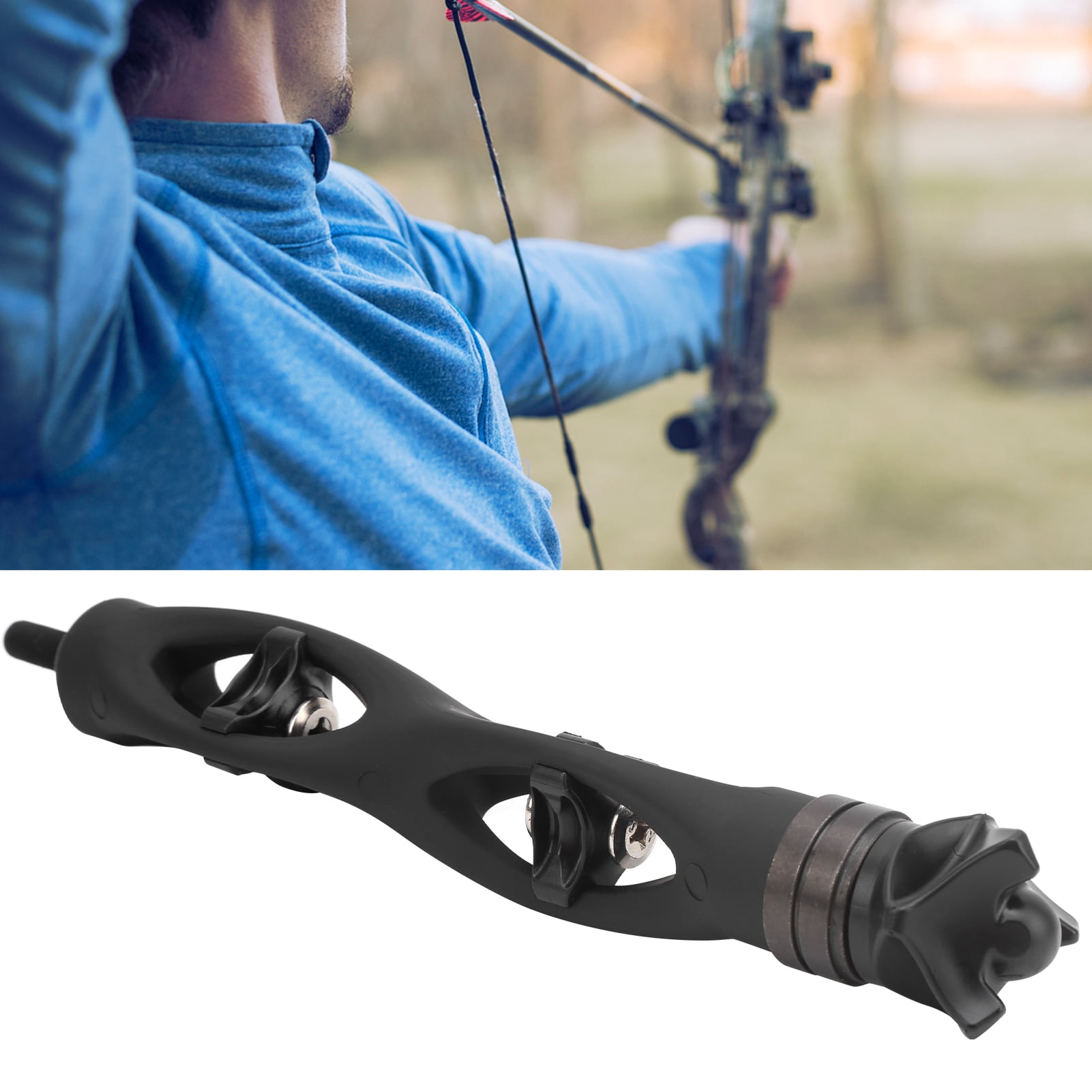

You don’t want to be walking miles and miles with a two-foot-long pole getting in your way.Īdditionally, these stabilizers will perform the best in windy conditions, as they likely won’t jut out past your riser very far. They’ll reduce vibration and noise, as well as minimalizing the jump of the bow in your hands and you shoot.īecause they’re so compact, they’re also optimal for bowhunters embarking on an all-day or even multiple-day hunting trip. Small stabilizers are best for archers shooting in confined areas like dense forests or a hunting blind. If you’re looking for something to help with the overall balance of your bow, these probably aren’t going to be the best choice for you.

These also tend to be the heaviest stabilizers on the market because they have a lot of energy to capture in such a small frame. You may not even notice that they’re there, especially because they’re typically mostly made of rubber and sometimes don’t even have weights on the ends. In general, these devices are meant to act more as dampeners than stabilizers. We’ll start with stabilizers smaller than 10 inches. Some were made mostly to absorb shock, while others mostly lend balance.ĭetermining the right stabilizer for your compound bow will necessitate an examination of your archery habits and existing gear. The extra weight also helps to balance the bow in the moments before the shot, ensuring a smooth release.īut not all stabilizers were meant to do each of these functions equally. With a carefully placed weight at the end of the bow, a lot of the dynamic energy can be absorbed into that place and directed away from the bow’s frame. That fluid movement can negatively affect your accuracy and cause your hands and arms to fatigue faster. The bow frame is a very rigid structure, but the amount of force necessary to propel an arrow forward at effective speeds will undoubtedly cause some fluid movement. However, added weight in the right place can yield positive results, especially if the compound bow you’re using is especially light. Of course, added weight is not always a good thing, especially for bowhunters trekking across the plains or hiking through the forest. Well, the main factor in all this is added weight. So, even though it may seem like a small accessory with a nearly undetectable impact, the stabilizer can be one of the most important contributors to a tight arrow grouping. With all these factors put into check by the stabilizer, most archers will find that their accuracy is improved as well. This reduces torque, noise, and hand shock. Not only does the accessory work to stabilize the overall balance of the bow, it stabilizes the vibration running through the bow’s frame when the archer releases the arrow. You probably wobbled and wavered until you extended your arms on either side of you, at which point you were able to gain your balance enough to continue walking with more confidence.Īnd it may seem like an obvious conclusion, but the verb “stabilize” actually applies to several different things. If you ever walked across a log or a balance beam or any thin, long object, it’s likely that you stuck your arms out as you did it. Stabilizers are made to do just what they sound like they are meant to do: stabilize. Here’s a hint: it’s not just to make your bow look bigger or cooler. Stabilizers: A Reviewīefore we get into what specific sizes you should be using for your compound bow, let’s make sure we understand the basic function of a stabilizer. Stabilizers are not an essential accessory for most bows, but if used correctly, they can help resolve problems while improving your accuracy. Small stabilizers are typically shorter than 10″, medium length stabilizers are 10-15″, and long ones are longer than 16″. To find the right length stabilizer for your compound bow, you need to consider the distance you’re shooting across, the environment you’re shooting in, and other factors. When you think about it, it’s amazing that the installation of such a simple device can solve so many problems at once. Balancing weight, balancing vibrations, balancing torque.


 0 kommentar(er)
0 kommentar(er)
